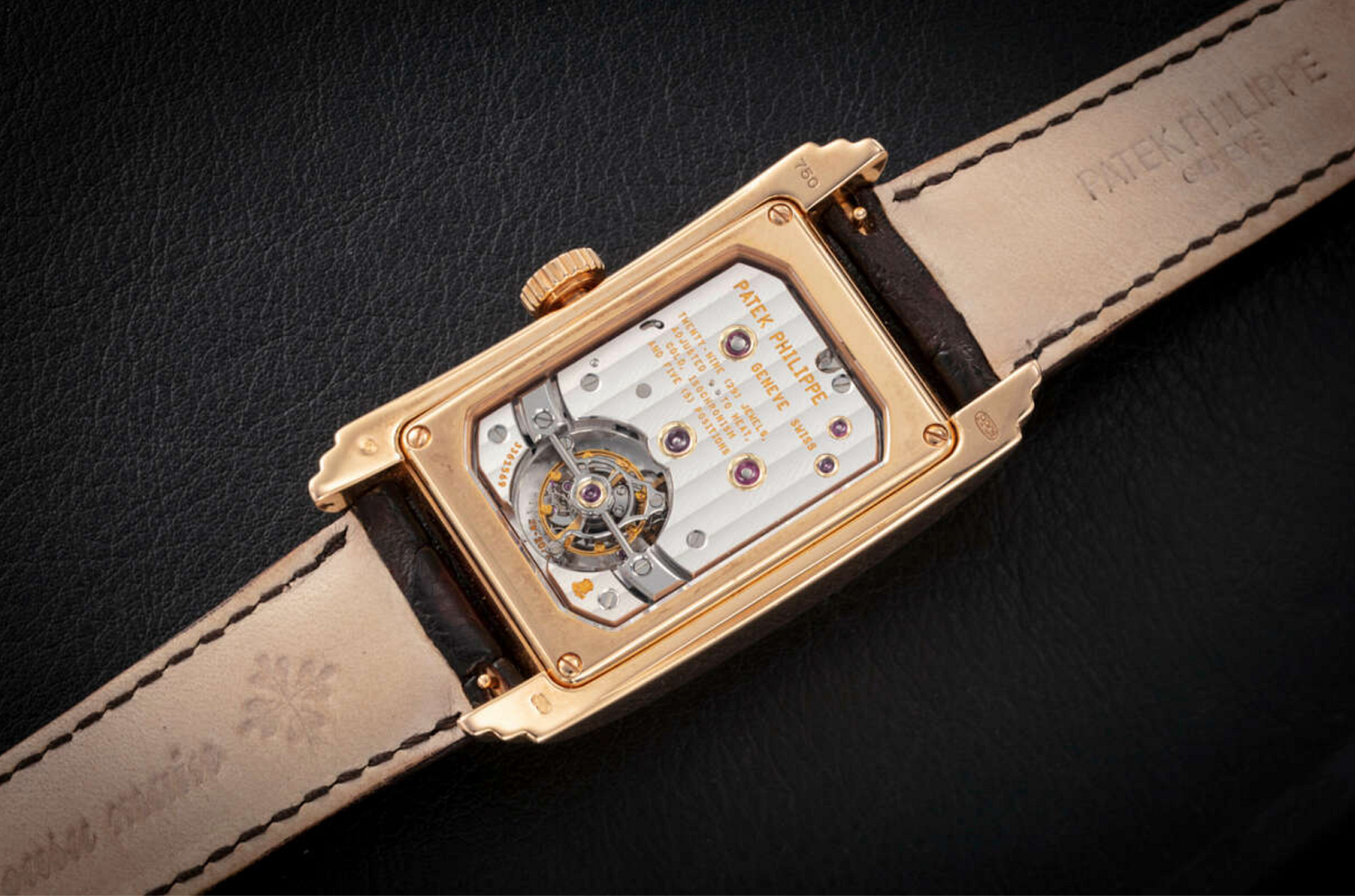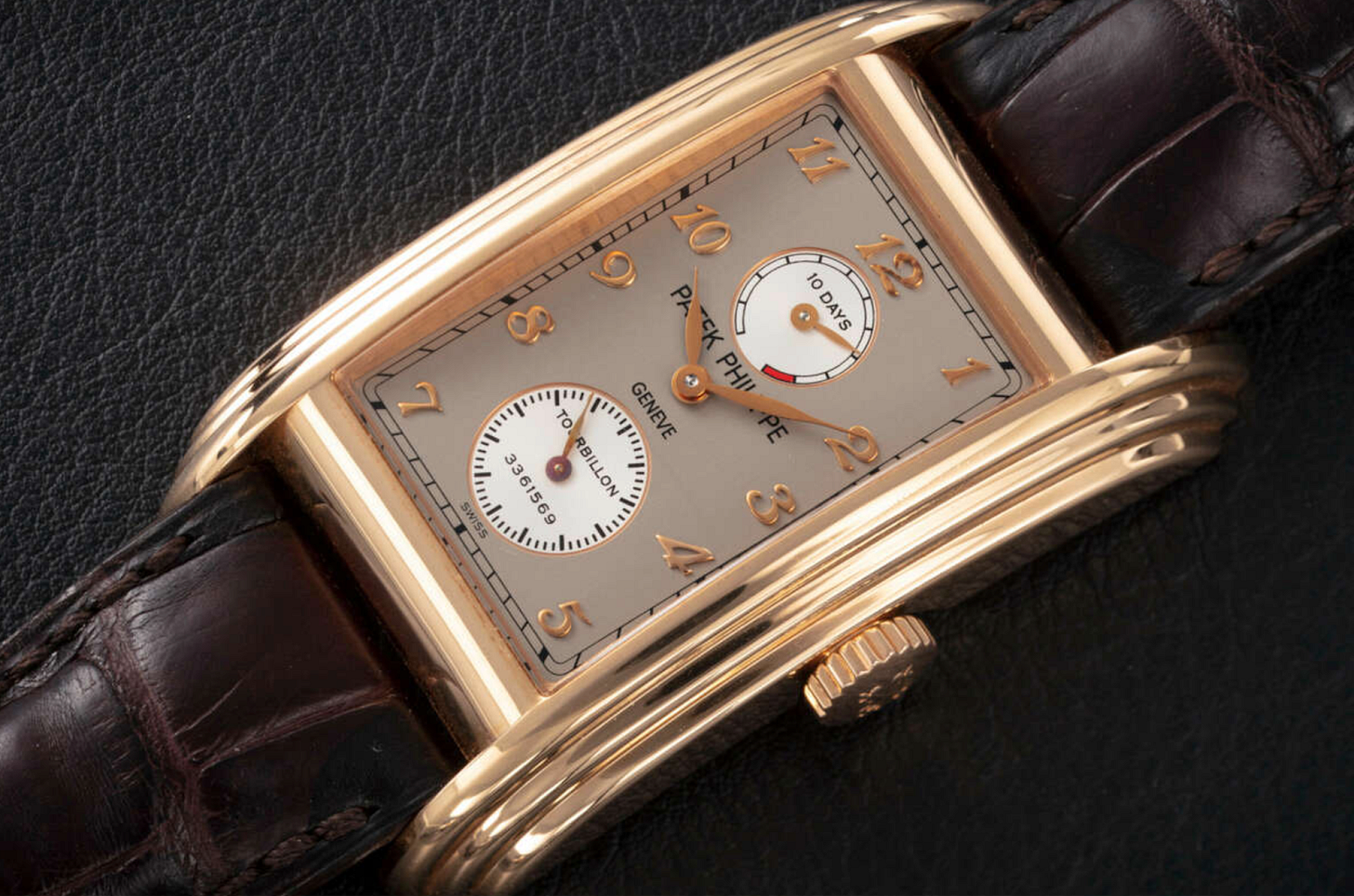Marcus Aldridge stood at the window of an atelier on the Rue du Rhône, Geneva's horological thoroughfare, watching pedestrians navigate the April rain. They walked with that particular Swiss efficiency that never quite translates to bustling—a precision of movement that seemed appropriate to a nation obsessed with timekeeping. He checked his wristwatch, a serviceable steel Rolex Explorer that had accompanied him from Boston, thinking of how it would soon be relegated to his sock drawer.
The receptionist, a woman whose studied neutrality disguised whether she found him interesting, forgettable, or merely American, directed him to a consultation room through a door of expertly refinished pearwood. The room contained a table, two chairs upholstered in calfskin the color of butterscotch, and a small vitrine displaying several museum-grade timepieces that Marcus deliberately avoided inspecting too closely. At forty-seven, he had learned the protocol of certain establishments: never appear too eager.
Michel Laurent—third-generation watchmaker, first-generation Instagram abstainer—appeared with the silent efficiency of someone who has spent five decades listening for the nearly imperceptible ticking of mechanical watches. Unlike the modern boutique salespeople who had recently colonized this street, Laurent wore no lapel pin announcing his brand affiliation. His legitimacy required no advertisement.
"Monsieur Aldridge," he said, his accent somehow making the name sound purposeful rather than coincidental. "I knew your grandfather well."
It had been six weeks since the letter from his grandfather's attorney had arrived. Marcus had imagined many scenarios for his grandfather's parting gesture—perhaps the deed to the summer house in Kennebunkport or the vintage Aston Martin that had sat, barely driven, in the garage. Instead, he had received a leather pouch containing an antique key and a note in his grandfather's precise script:
"The watchmaker in Geneva holds what I couldn't say in words. What it knows, I've always felt. May it serve you with the same quiet dignity."
Inside the safe deposit box: a Patek Philippe receipt from 2009 with the reference number 5101R and nothing more. No explanation. No Congratulations on your inheritance. No family history fable of keeping things that matter. Just the receipt, yellowing slightly at the edges, with a price that made Marcus momentarily question his grandfather's typically sound judgment.
"He was a man of uncommon perception," Laurent said, taking a seat opposite Marcus. From beneath the table, he produced a leather folio embossed with a small Calatrava cross. "When everyone was demanding complications they could display—perpetual calendars, minute repeaters, chronographs—your grandfather chose something... less demonstrative."
Laurent's hands, steady despite his advanced age, opened the folio with the deliberation of a man accustomed to handling fragile things. The cliché about watchmakers having steady hands persists because, like many clichés, it contains its small truth.
"When we debuted the 5101R in 2003, following its platinum sibling, most collectors didn't understand it," he continued. "It wasn't round. It wasn't a sports model. Its greatest complexity remained hidden. This confused the new collectors—the tech entrepreneurs, the hedge-fund partners who had just discovered mechanical watches. For them, the tourbillon needed to be visible, preferably through a dial cutaway, like mechanical plumage."
He withdrew a slender wooden box from the folio. The box bore no inscription, no brand name, only a small inlaid Calatrava cross in mother-of-pearl. "Your grandfather purchased this in 2009, as the financial crisis was recalibrating ideas about conspicuous consumption. Perfect timing, as always."
The Patek Philippe 5101R, shown with its discreet dial that gives no hint of the tourbillon beneath
The box opened with a soft, airtight sigh. Inside, nestled in midnight-blue fabric, lay a rectangular watch with a rose-gold case that caught the room's subdued lighting with surprising warmth. Its silver-grey dial featured vertical brushing, applied Breguet numerals, and two modest subdials—one at 12 o'clock, the other at 6. The watch appeared not so much designed as distilled.
"It looks... restrained," Marcus observed, deploying the only descriptive adjective that came to mind.
Laurent almost smiled, an expression so subtle it manifested primarily as a microscopic relaxation around the eyes. "May I?"
He turned the watch over, revealing a sapphire crystal case back. Through it, Marcus observed what could only be described as mechanical pointillism—dozens, perhaps hundreds, of tiny components working in concert to solve a problem that smartphones had rendered technically obsolete but philosophically essential.
"The tourbillon," Laurent explained, indicating a small rotating cage, "comprises seventy-two parts, each finished by hand, operating in a space smaller than your fingernail. Breguet invented it to counteract the effects of gravity on pocket watches, which remained primarily in vertical positions. In a wristwatch, it's largely vestigial—a complexity for complexity's sake. Yet we hide it." He paused. "Your grandfather appreciated that contradiction."
The tourbillon rotated hypnotically, its precisely calibrated motion contrasting with the static perfection of the surrounding mechanism, which gleamed with Geneva stripes and mirror-polished steel.
"When other manufactures were exhibiting their tourbillons through skeletonized dials—essentially mechanized burlesque—Patek chose discretion," Laurent continued. "And there's another feat here: combining a tourbillon with a ten-day power reserve within a rectangular movement. The geometry is unforgiving. Round movements accommodate complications more naturally. In rectangular calibers, every cubic millimeter must be negotiated for, argued over, justified."
He indicated the power reserve subdial at 12 o'clock. "Ten days between windings—a small eternity in mechanical watchmaking. Components had to be reimagined, thinned, occasionally relocated entirely. Six prototypes were abandoned before this caliber was approved."
Laurent placed the watch in Marcus's hand. Despite its substantial dimensions—nearly fifty-two millimeters long—the case curved naturally to follow the wrist's contours. The 5101R possessed that rare quality of being simultaneously substantial and unobtrusive, like old money or good manners.
"Your grandfather visited every six months for coffee," Laurent said, watching Marcus adjust the alligator strap. "He never once mentioned the watch. We discussed opera, American politics, his irritation with Boston's endless construction projects. But never the watch. He understood that some possessions operate best in the periphery of one's attention—present but unannounced."
Fastened to his wrist, the watch felt not heavy but consequential. Marcus realized he had expected something ostentatious, perhaps as a counterbalance to his grandfather's notoriously austere personality. Instead, he had received something that perfectly embodied the man—intellectually substantial, aesthetically refined, and utterly uninterested in external validation.
Later that evening, in his room at the Beau-Rivage, Marcus researched his inheritance on his laptop, the glow of the screen illuminating the 5101R on his wrist. Original retail price in 2009: approximately two hundred and sixty-five thousand Swiss francs. Current market value: between one hundred forty thousand and one hundred eighty thousand dollars, depending on condition and provenance.
He learned that Patek Philippe had quietly produced the 5101 series for twelve years, from 2003 until 2015, never with much fanfare, never with production numbers approaching their more commercial references.
"Limited not by numbered edition," one collector forum explained, "but by the simple constraints of how many master watchmakers could produce such a movement."
A Christie's auction listing from 2022 noted that a pristine example had sold for one hundred thirty-eight thousand dollars, with the specialist's notes mentioning a "renewed collector interest in complicated dress watches that prioritize discretion over display." The listing included a quote from a Geneva dealer:
"The 5101R is for the collector who values the internal logic of fine watchmaking. It's not about what it shows. It's about what it knows."
Marcus closed his laptop. Outside his window, Lake Geneva reflected the lights of the city, its surface occasionally disrupted by late-night boat traffic. He thought about what his grandfather—a neurosurgeon who had maintained a practice well into his eighties—had intended by this bequest. Not the monetary value, certainly. His grandfather had never considered wealth a personality trait, merely a circumstance that afforded one the luxury of character.
The following morning, Marcus returned to Laurent's atelier with a practical question.
"The movement—should I have it serviced? It's been dormant for some time."
Laurent considered this with appropriate gravity. "The Caliber TO 28-20 REC 10J PS is a masterpiece of engineering. Twin barrels for the ten-day reserve, tourbillon regulation, seventy-two components in the tourbillon cage alone—yes, it deserves attention. But bear this in mind: these movements were designed to outlast their first owners."
He glanced at the watch on Marcus's wrist. "I see you've already decided against storing it."
"It seemed... disrespectful," Marcus replied.
Laurent nodded almost imperceptibly. "Your grandfather purchased it after your grandmother passed. He said he needed something that made sense. His words, not mine."
Three days later, as his flight gained altitude above Switzerland, Marcus found himself strangely comforted by the weight on his wrist. In Boston, none of his colleagues would recognize what he wore. His girlfriend would appreciate its subdued aesthetics without understanding its significance. His friends would wonder why anyone would spend a small fortune on what appeared to be a simple gold dress watch.
And for the first time in his adult life, Marcus understood the particular pleasure of knowing something that required no external explanation or validation. The 5101R wasn't merely a timekeeper; it was a philosophy encased in gold—a reminder that, in a culture increasingly built around display, true value often remains deliberately hidden, visible only to those who understand where to look.
In a world of performative luxury, his grandfather had chosen something that reflected the worth of inner substance. And now, with every passing minute marked by leaf-shaped hands traversing a satin-brushed dial, that legacy continued—a secret shared between three generations of men and a watchmaker in Geneva who understood that some complications are best left unannounced.
Beneath his cuff, unseen by anyone except himself, seventy-two meticulously crafted parts rotated in their perpetual dance against gravity. The tourbillon turned, as his grandfather had understood it should: not for applause, but for accuracy.
If you enjoyed this piece, consider subscribing for more stories about the intersection of craftsmanship, legacy, and the quiet luxuries that define us.
About the Author
Sergio Galanti is a journalist specializing in independent watchmaking and mechanical horology.





